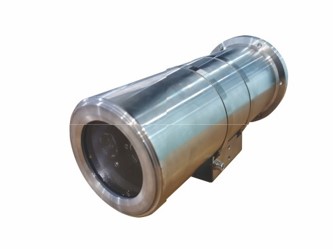Applications
Application of normal temperature and pressure perfluorohexanone jet fire extinguishing device in electrochemical energy storage equipment
发表于 应用案例 |I. Product introduction of perfluorohexanone fire extinguishing agent
Perfluorohexanone (perfluoro-2-methyl-3-pentanone) fire extinguishing agent, at room temperature for the colorless, odorless transparent liquid, boiling point of about 49 ℃, latent heat of evaporation of water 1/25, very easy to vaporize. It has high extinguishing efficiency (comparable with Halon-1301), inactive to ozone (ODP=0), greenhouse effect index (GWP) is only 1, NOAEL is 10%, and good insulating properties.
Perfluorohexanone fire extinguishing agent has been applied in Europe and the United States and other developed countries for more than 20 years, and has been included in the standard of the National Fire Protection Association (NFPA2001 edition) as a clean gas fire extinguishing agent. Due to the superior performance of perfluorohexanone fire extinguishing agent, such as easy transportation, good compatibility, cleanliness and environmental protection, high extinguishing efficiency and low toxicity, it is considered to be the most promising fire extinguishing agent to replace halogenated alkanes such as sevofluoropropane and trifluoromethane and other transitional halogenated alkane fire extinguishing agents to date.
★ Perfluorohexanone fire extinguishing agent fire extinguishing principle
Perfluorohexanone fire extinguishing agent has a good fire extinguishing effect, its mechanism is through the physical and chemical aspects of the role of fire extinguishing, can be divided into three processes:
First: cooling fire: perfluorohexanone liquid sprayed at high speed atomization, vaporized by heat, due to the high heat capacity of vaporization, has a strong ability to absorb heat, so that the flame quickly lose heat, destroying the balance of the fire tetrahedron.
Second: asphyxiation: Perfluorohexanone has a high specific gravity, and in the process of suspension and falling, it can isolate the oxygen in the air around the flame.
Third: chemical suppression of fire extinguishing: free radicals of combustion chain reaction can be captured to terminate the chain reaction of flame propagation.
II. Product advantages of perfluorohexanone fire extinguishing agent

The application pain point problem of perfluorohexanone fire extinguishing agent and the company's solution idea.
At present, the mainstream perfluorohexanone fire extinguishing system at home and abroad, there is a big problem is the need to store perfluorohexanone fire extinguishing agent with high-pressure tanks, or through the pipeline system to complete the long-distance transmission of extinguishing agent, resulting in high cost of equipment, and due to the high-pressure problem, can not be used in special areas such as airplanes, warships, etc., and in the fields of big data server room, cultural relics protection field, high-pressure fire extinguishing system exists in damage to the object of protection. Risks.
In view of the pain points of the current application of perfluorohexanone fire extinguishing agent, the company's perfluorohexanone fire extinguishing device series of products, comprehensive implementation of the core points of the use of perfluorohexanone fire extinguishing agent at room temperature and atmospheric pressure, in the cost of the device, the use of safety, flexibility, and fire extinguishing effect, etc, has obvious advantages. The comprehensive and systematic application of normal temperature and normal pressure perfluorohexanone fire extinguishing product portfolio is suitable for fire extinguishing applications in enclosed and semi-enclosed spaces, as well as in small spaces.
Fourth, room temperature and pressure perfluorohexanone jet fire extinguishing device function introduction
- Normal temperature and pressure perfluorohexanone jet fire extinguishing device adopts perfluorohexanone as the fire extinguishing agent, and can spray mist or column fire extinguishing agent to complete the fire extinguishing function. It is mainly composed of normal temperature and pressure storage tank, perfluorohexanone conveying pipeline, jetting system, optional sensor combination and optional communication module and other main components.
- The spraying system contains high-speed water pump, which rotates rapidly to generate negative pressure after working, and the perfluorohexanone in the storage tank is exported, and then sprayed to the fire extinguishing space in mist or column through the nozzle to achieve the effect of rapid and non-destructive fire extinguishing.
- The nozzle system can be rotating nozzle, can also choose to install in a structure can be horizontal 360 °, up and down a certain angle of rotation (refer to the fire water cannon), to complete the fire point location scanning and positioning function. Customized modular nozzle systems are also available to meet the needs of enclosed and confined spaces.
- The overall improvement of the device is to provide one or more normal temperature and pressure perfluorohexanone storage device (the capacity of the extinguishing agent is flexibly expanded according to the requirements of the site fire extinguishing), and each storage device is equipped with an extinguishing agent pump spraying system. Each spraying system supports a variety of nozzle forms according to the different protection objects on site. The system supports communication function, automatic alarm after starting, and can support the linkage function with the fire host. It has the comprehensive functions of automatic detection, automatic alarm, automatic start and manual start.
V. Structure diagram of normal temperature and pressure perfluorohexanone jet fire extinguishing equipment

Remarks:
- The tanks are made of plastic and the appearance and size can be customized;
- The nozzle supports rotatable nozzles and can also choose nozzles with automatic tracking and positioning function. In order to meet the requirements of fire extinguishing in small spaces, it also supports modular and expandable customized nozzle systems;
- The system can be activated manually and also supports fire warning sensors (fiber optic temperature sensors, thermal cracking sensors, composite gas sensors, etc.) to be activated in a linked manner.
Six, room temperature and pressure perfluorohexanone jet fire extinguishing device supporting sensors and communication methods

Early warning sensors are applied to realize early detection and work in advance to ensure that fires are nipped in the bud!
According to the fire extinguishing detection requirements of the application scenario, the jet fire extinguishing device can be activated manually, linked with the fire alarm host, or activated according to the alarm output of one or more of the following combinations of sensors:
- Fiber optic temperature sensors
- Multi-point contact temperature sensor consisting of DS18B20
- Composite Gas Sensor: CO, H2, VOC, Smoke Concentration
- Ambient Temperature Sensors
- Smoke Sensor
- Thermal Cracking Sensor
- Flame Detection Sensors




VII. Characteristics of fires in electrochemical energy storage equipment and the current state of fire standards

Electrochemical energy storage technology has the advantages of short construction time, long power preservation time, mature storage battery technology, fast charging and discharging speed and so on to become the mainstream energy storage method nowadays.
The development of electrochemical energy storage is rapid, but the development of its supporting fire protection system is slow. Battery fire is different from any other fire, in the battery combustion process to form a mixture of gas fire (C fire), liquid fire (B fire) and solid fire (A fire) mixed with a comprehensive class of fire. The traditional energy storage fires are mostly extinguished by Heptafluoropropane gas, which is extremely ineffective and completely unable to achieve the effect of extinguishing the fire and continuously cooling down to inhibit re-ignition.
Currently at the standard level, a number of standards have been released from 2018 to the present, but with the rapid development of energy storage, these standards can no longer cover everything, especially the extreme lack of standards related to fire protection for energy storage.
The latest situation is that on July 1, 2023, the implementation of the national standard "Electrochemical Energy Storage Station Safety Code" began, energy storage fire from the theory from the recommended configuration to the mandatory configuration, energy storage fire product tier from the cabin level to the PACK level, the smallest protection unit of the automatic fire extinguishing system for the battery module, each battery module is appropriate to individually configure the detector and the extinguishing media spray nozzleThe
VIII. Fire protection requirements for energy storage scenarios and points of opportunity for perfluorohexanone fire extinguishers
According to the "electrochemical energy storage station safety technical requirements" for lithium iron phosphate battery fire suppression system should be able to extinguish a single battery fire within 10S, for lead-acid batteries and lead-charcoal batteries as the energy storage carrier for electrochemical energy storage station, the fire suppression system should be able to extinguish a single battery fire within 5s. 24 hours without rekindling. Detection is a prerequisite for the start of the fire extinguishing device, respectively, using fiber optic temperature measurement system, combustible gas detection, composite detector, fire detection tube detection, temperature-sensitive cable detection, thermal wire detection and other detection methods on the market for comparison testing.
According to the research results of Zhongguancun Energy Storage Industry and Technology Alliance, perfluorohexanone can quickly extinguish the open fire and has certain cooling effect, but if it cannot maintain a certain concentration of extinguishing agent and enough impregnation time, it cannot inhibit the thermal runaway of lithium battery. That is to say, ordinary high-pressure injection of perfluorohexanone fire extinguishers, can not provide controlled perfluorohexanone injection. And room temperature normal temperature perfluorohexanone jet fire extinguishing device, by matching the necessary field sensors, theIt is possible to realize the controlled spray application of perfluorohexanone with sufficient concentration and spraying time (volume) for lithium battery on-site fire extinguishing.
IX. Overview of the urgent problems of electrochemical energy storage for firefighting and our program
Through the research of electric power fire protection, our company has a deeper understanding of the causes of energy storage battery fire and the effective way to extinguish the fire. Through a large number of experimental research and communication with end customers, we have found that electrochemical energy storage fire protection is currently two major problems that need to be solved urgently:
1. Detection section:
Now the amount of energy storage fire detection is relatively single, the typical application is a smoke-sensing plus temperature sensing detector, and electrochemical energy storage cabin if only the installation of these two sensors, will lead to the battery has been completely out of control of the heat generated by the temperature and smoke spread to the entire cabin in order to play the role of the alarm, can not play the role of the alarm, can only be said to be an "after-the-fact notification".
2. Fire suppression section:
Nowadays, energy storage fire fighting adopts the full flooding type of Heptafluoropropane. Due to the special characteristics of battery fire, Heptafluoropropane can only extinguish the open fire, but completely unable to improve the thermal runaway phenomenon of the battery, and the fire suppression of the storage battery compartment focuses on the suppression of the thermal runaway phenomenon of the battery, so as to prevent the rekindling and the impact of the other normal batteries. From the above, perfluorohexanone fire extinguishing agent is currently the optimal choice for electrochemical energy storage fire protection.
★ Program overview
The fire protection solution for electrochemical energy storage equipment, based on the principle of "early detection and early disposal", is based on the fiber optic continuous temperature measurement system, together with different on-site sensors, such as multi-parameter gas sensors, to carry out early detection and warning for the primary stage of thermal runaway of the storage battery in the storage compartment, so as to put out the fire in the embryonic stage!
X. Normal temperature and pressure perfluorohexanone jet electrochemical storage cabinet compartmentalized fire extinguishing system

Energy storage cabinet perfluorohexanone top spray, full annihilation type fire extinguishing. Continuous spraying followed by support for spot spraying for continuous cooling.
XI. Normal temperature and pressure perfluorohexanone jet electrochemical storage cabinet package level fire extinguishing system

Energy storage cabinet perfluorohexanone package level fire extinguishing system, full annihilation type fire extinguishing. Each energy storage battery cabinet supports continuous cooling by spot spraying after continuous spraying.
XII. Advantageous features of our electrochemical energy storage equipment fire protection program
- Accurate monitoring: bud state fire prediction, a variety of lithium battery thermal runaway characteristics of material online monitoring (continuous fiber optic temperature measurement, composite gas sensors, thermal cracking sensors, temperature sensors, smoke sensors, etc.), accurately perceive the state of the lithium battery thermal runaway;
- Heat absorption and cooling: Perfluorohexanone fire extinguishing agent is sprayed in sufficient quantity to extinguish the fire, and it is non-destructive to the batteries and electronic equipment to cool down the fire;
- Inhibit thermal runaway: Perfluorohexanone fire extinguishing agent is electrically sprayed several times to inhibit thermal runaway;
- Customized nozzle system: special infusion hose, quick couplings and customized nozzle combination, support the field cutting fast installation. Customized nozzles support rapid atomization to speed up fire extinguishing;
- The sprinkler system can be mounted inside the battery box to provide proximity perfluorohexanone spraying of the battery pack (pack level fire suppression system).
XIII. Typical application scenarios of normal temperature and pressure perfluorohexanone jet fire extinguishing equipment
- High-voltage distribution cabinets, big data server cabinets;
- Aircraft cargo bays and ship cabins;
- Electrochemical energy storage compartment;
- Large wind turbines;
- Museums, archives, and other places with special requirements for asset preservation, etc.
In order to meet the fire extinguishing needs of different places, the extinguishing agent capacity, pump specifications, nozzle system, etc. of the normal temperature and normal pressure perfluorohexanone jet fire extinguishing equipment can be flexibly configured according to the needs of fire extinguishing at the scene.
Content Reviewer:Jimme Yao





